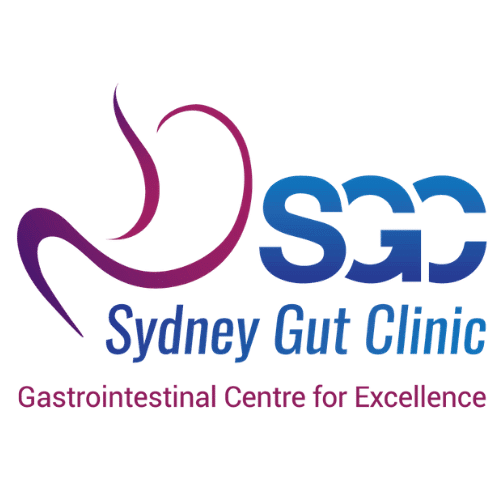Acid reflux refers to the medical condition where the ring of muscle at the entrance to the stomach weakens and allows acid to move from the stomach to the oesophagus. This muscle is identified as the lower esophageal sphincter.
This condition is diagnosed in instances when the sphincter doesn’t close completely or if it opens too frequently. In these instances, acid from the stomach moves upwards causing a burning sensation (heartburn).Despite the fact that 15%-20% of Australian adults experience heartburn at least once a week and around 5% on a daily basis, its long-term consequences can be serious. For patients who experience acid reflux on a frequent basis, it’s possible that they may be suffering from gastroesophageal reflux disease.
This post takes a look at the causes and treatment for acid reflux.
Causes of acid reflux
One of the primary causes of acid reflux is a condition called hiatal hernia. This takes place when the upper part of the stomach and the lower esophageal sphincter move on top of the diaphragm, which is the muscle that separates the chest from the stomach.
For individuals with hiatal hernia, acid enters the oesophagus due to this displacement.
Apart from this condition, several other risk factors place patients at risk of developing acid reflux. These include:
- Pregnancy
- Certain medications including ibuprofen, aspirin, specific muscle relaxers and other prescriptions
- Food items including tomato, citrus, chocolate, spicy food, fatty food, garlic, mint, and onions
- The consumption of alcoholic beverages, carbonated drinks and caffeinated beverages
- Smoking
- Unhealthy eating habits including snacking close to bedtime or lying down after heavy meals
- Patients who are obese or overweight
Investigative procedures
Gastroscopy
During this procedure, a small tube with a camera on the end is inserted through a patient’s mouth, into the oesophagus. Doctors can then see the lining of the oesophagus and the stomach.
The test lasts approximately 5-10 minutes. Doctors may administer a mild sedative and/or spray a patient’s throat with an analgesic to prevent discomfort.
Barium swallow
A Barium swallow radiograph can rule out any structural issues within the oesophagus. Patients are asked to swallow a soluble solution of barium. This allows doctors to take X-rays of the oesophagus.
CT scan
This method is used to obtain a 2D image of the patient’s body. Patients are asked to lie down on a table and are passed through a large, squared-off machine. Doctors then take CT scans to look for tumours and examine lymph nodes and other bone abnormalities.
Contrast dyes may be used to improve the computer image.
Biopsy
Gastroenterologists may use biopsies to determine whether individuals are suffering from acid reflux and determine the potential cause for this. A tiny surgical instrument will be passed through the scope to remove a small piece of lining from the oesophagus.
The sample will be sent to a lab for analysis, after which it may be possible to determine what patients are suffering from.
Treatment for patients with acid reflux
Doctors may treat acid reflux in a variety of ways including lifestyle modification, medication, and surgery. Treatment will depend on the symptoms presented by each patient.
Lifestyle modification
Some of the lifestyle changes recommended by doctors include:
- Eliminating specific food items and beverages that trigger symptoms of acid reflux
- The discontinuation of smoking
- Losing weight for patients who are obese/overweight
- Eating meals a couple of hours before sleeping
- Avoiding tight clothing
- Elevating a patient’s bed head by at least 4-6 inches
Complications secondary to reflux
- Barretts esophagus
- Peptic structure
- Dental erosion
- Aspiration / Laryngitis
- Esophageal cancer
Medication
When doctors choose to prescribe medication to treat acid reflux, antacids, foaming agents, proton pump inhibitors, prokinetics, and H2 blockers are the standard when it comes to prescriptions.
Antacids include Gaviscon, Mylanta Heartburn Relief, Gastroge and Alu-tab, which have the ability to neutralise the acid from the stomach. Side-effects include diarrhoea or constipation if the medication is taken excessively.
Of the different varieties of foaming agents available, Gaviscon and Mylanta are the most commonly used.
Proton pump inhibitors such as Nexium, Losec, Pariet, Somac and others are frequently used to reduce the amount of acid produced by the stomach. Prokinetics empty the stomach faster. These reduce the symptoms of acid reflux.
Such as Ranitidine, H2 agonists are also commonly used but are not as effective as Proton pump inhibitors. These reduce the production of acid.
Surgery
In the event that patients don’t report any changes following lifestyle modification or medication, doctors may recommend the following surgery to alleviate symptoms of this condition.
Fundoplication: An artificial valve is created using the top of the patient’s stomach and involves surgeons wrapping the upper part of the stomach around the sphincter to strengthen it. This also prevents acid reflux and repairs hiatal hernias.
Treating acid reflux requires expert attention
For patients with acid reflux, receiving professional medical attention is important. In this process, individuals must avoid diagnosing themselves and changing their diets, lifestyles or medication without consulting a doctor.
The Sydney Gut Clinic specialises in treating gastroenterology-related conditions such as acid reflux. More information can be found on their site. Appointments for treatment can also be requested.

